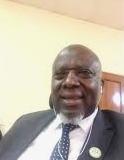Teachers’ Perceptions of the Ugandan Secondary School Islamic Religious Education Syllabi
DOI:
https://doi.org/10.53449/ije.v1i1.44Keywords:
Islamic religious education, Islamic curriculum, Bloom's taxonomyAbstract
This study explored teachers’ perceptions of the appropriateness of the Islamic Religious Education (IRE) secondary school syllabi and the challenges therein. A combination of stratified and cluster sampling techniques were used to select 234 IRE teachers from 124 secondary schools in Uganda. A cross-sectional survey design was used and data was collected using closed- and open-ended questionnaire. Data was analysed by descriptive statistics and interpreted using Benjamin Bloom’s taxonomy of educational objectives. Findings indicate that: teachers enjoyed teaching low level and practical topics and found difficulties teaching abstract, philosophical and computational-based ones; the affective components of the IRE syllabi were not being appropriately addressed; teachers’ limited competency in Arabic Language was an obstacle in handling of technical topics; and that the IRE syllabi were quite broad compared to the time allocated to their implementation. The implications to teacher educators is that more skills in Arabic Language and practice in handling particular topics should be given to pre- and in-service teachers. The IRE syllabi should be revised to accommodate contemporary issues.
Downloads
References
Abdalla, A., Abu-Nimer, M., Nasser, I., Kadayific, A., Kunkle, L., & el-Kilani, S. (2006). Improving the quality of Islamic education in developing countries: Innovative approaches. Washington, DC: Creative Associates International.
AbuSulayman, A. (Ed.). (1989). Islamization of knowledge: General Principles and Work Plan. (2nd ed.). Herndon: The International Institute of Islamic Thought (IIIT).
Al Zeera, Z. (2001). Wholeness and holiness in education: An Islamic perspective. Herndon: The International Institute of Islamic Thought (IIIT).
Al-Attas, M. N. (1991). The Concept of Education in Islam. Cetakan pertama. Kuala Lumpur:
ISTAC.
Al-Khalediy, K. (2011). Education and Methods of Teaching in Islam in the Era of Az-Zarnooji. Retrieved from www.qsm.ac.il/arblanguage/docs/majalla/3%2B4/eng%3D2%3Dkalid.pdf
Anderson, L. W. & Krathwohl, D. R. (Eds). (2001). A taxonomy for learning, teaching and assessing: A revision of Bloom’s taxonomy of educational objectives. Boston: Allyn & Bacon.
Ashaari, M. F., Ismail, Z., Puteh, A., Samsudin, M. A., Ismail, M., Kawangit, R., Zainal, H., Nasira, B. M. & Ramzi, M. I. (2011). An assessment of teaching and learning methodology in Islamic studies. Procedia - Social and Behavioral Sciences, 59 (2012) 618-626.
Creswell, J. W. (2012). Educational research: Planning, conducting and evaluating quantitative and qualitative research. (4th ed.). Boston: Pearson Education, Inc.
Douglass, S. L. & Shaikh, M. A. (2004). Defining Islamic education: Differentiation and applications. Current Issues in Comparative Education, 7(1). Retrieved from http://www.tc.columbia.edu/cice/pdf/25707_7_1_Douglas_Shaikh.pdf
Hashim, C. N., & Langgulung, H. (2008). Islamic religious curriculum in Muslim countries: The experiences of Indonesia and Malaysia. Bulletin of Education & Research, 30(1), 1-19.
Hashim, R. (2005). Rethinking Islamic Education in Facing the Challenges of the Twenty-first Century.The American Journal of Islamic Social Sciences, 22(4)
Husain, S., & Ashraf, A. (1979). Crisis in Muslim Education. Jeddah: Hodder and Stoughton.
Hussin, N. H., Noh, M. A. C., & Tamuri, A. B. (2014). The Religious Practices Teaching Pedagogy of Islamic Education Excellent Teachers. Mediterranean Journal of Social Sciences, 5(16). Retrieved from http://www.mcser.org/journal/index.php/mjss/article/viewFile/3301/3255
Inter-University Council for East Africa. (2010). A road map to quality: Handbook for quality assurance in higher education. (Vol. 1). The Inter-University Council for East Africa/DAAD.
Islamic University in Uganda Syllabus Unification Committee. (2005). Unified syllabus for Islamic institutes in Uganda. Islamic University in Uganda
Langgulung, H. (2004). Education, Islam and Muslim in the 21st Century: Image and reality. Paper presented at: International Conference on Muslim Education in the 21st Century PWTC, Kuala Lumpur (4-6 August).
Lubis, S. A. (2012). Islamic education towards the era of social change: Effort in enhancing the quality. Jurnal Al-Tamaddun Bil. 7(1), 107-108.
Lujja, S., Mustafa. O., & Rusni, H. (2016). “Islamic education in Uganda: Challenges and prospects of Islamization of Knowledge. TAWARIKH: International Journal for Historical Studies, 7(2), 141- 156.
Mayanja, M. K. (2015). The integration of Islamic & secular education in Uganda. Paper presented at The First International Conference on Islamic Epistemology and Curriculum Development: Towards a Creative Revitalization of Our Heritage. MUM & IIIT.
Moes, M. F. (n.d). Creating Islamic Culture in Muslim Schools. Retrieved from https://theisla.org/wp-content/uploads/resources/CreatingIslamicCultureInMuslimSchools.pdf
Mohamed, A. F. K. (2015). Between Dictators and Scholars: Institutions and Methods of Teaching in Medieval Islam. Journal of Islamic Studies and Culture, 3(1), 34-41. Doi: 10.15640/jisc.v3n1a5.
National Council for Higher Education. (2014). Quality assurance framework for universities and the licensing process for higher education institutions. NCHE
National Curriculum Development Centre. (2001). Secondary school Islamic Religious Education syllabi for UCE (Ordinary level) UACE (Advanced level). Kampala: Ministry of Education and Sports.
Niyozov, S., & Memon, N. (2011). Islamic education and islamization: Evolution of themes, continuities and new directions. Journal of Muslim Minority Affairs, 31(1), 5–30.
Noh, M. A. C., & Kasim, A. Y. (2012). Teaching of Islamic Doctrine and Beliefs in School Subject Content Knowledge and Pedagogical Considerations. International Journal of Humanities and Social Science, 2(11). Retrieved from http://www.ijhssnet.com/journals/Vol_2_No_11_June_2012/29.pdf.
Nooraini Othman and Khairul Azmi Mohamad. (2011). Eclectic Model in the Malaysian Education System. Journal of International Education Studies, 4(4), 111-117. doi:10.5539/ies.v4n4p111.
Saqeb, G. N. (2000). Some reflections on Islamization of education since 1977 Makkah conference: Accomplishments, failures and tasks ahead. Intellectual Discourse, 8(1), 45-68.
Seifert, K. & Rosemary Sutton, R. (2009). Educational psychology. (2nd ed). Zurich: Global Text
Shah, S. F, Ghazi, S. R., Miraj-ud-Din, Shahzad, S., & Ullah, I. (2015). Quality and Features of Education in the Muslim World. Universal Journal of Educational Research, 3(4), 243-257. doi: 10.13189/ujer.2015.030401.
Tauhidi, D. (2002). A renewed vision: the Tarbiyah Project shapes up to reshape Islamic education. Islamic Horizons, 31(6), 62-70. Retrieved from http://www.bcmaburnaby.org/Resources/Education/Tarbiyah%20Overview%20-%20Dawud%20Tauhidi.pdf
Tugume, L. H. (2015). The exigency of integrating Quran education within secular curricular in non-Islamic states: A case of Uganda. International Journal of Sciences: Basic and Applied Research, 24(4), 235-252.
Uganda Bureau of Statistics. (2014). National population and housing 2014. UBOS. Retrieved from http://www.ubos.org/2016/03/24/census-2014-final-results/
Uganda Muslim Brothers and Sisters (2012). Uganda Muslim secondary and primary schools. Retrieved from
https://umbsextra.wordpress.com/2012/02/23/uganda-muslim-secondary-schools/
Uganda National Examination Board (2016). Result sheet book. UNEB
Wan Bakar, W. Z. (n.d). The First world conference on Muslim education 1977. Retrieved from https://www.academia.edu/3880469/THE_FIRST_WORLD_CONFERENCE_ON_MUSLIM_EDUCATION_1977.
Yaacob, S., & Embong, R. (2008). The concept of an integrated Islamic curriculum and its implications for contemporary Islamic schools. Retrieved from http://irep.iium.edu.my/2470/1/Islamic_School_Curriculum.pdf. Accessed 19th December 2017.








